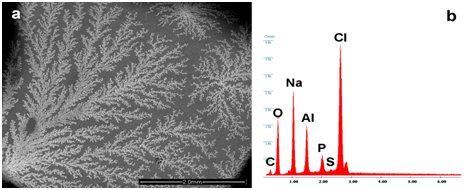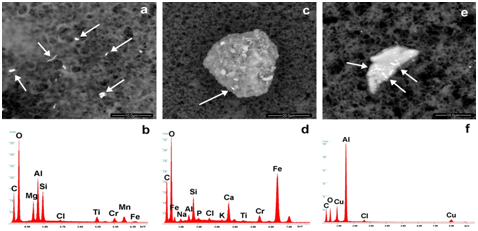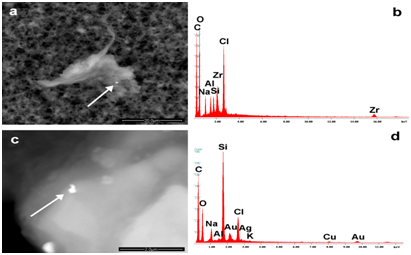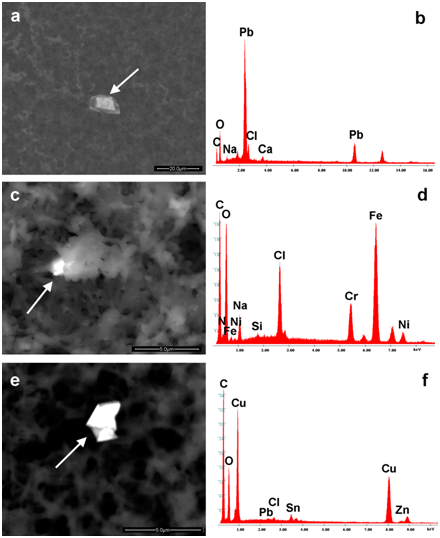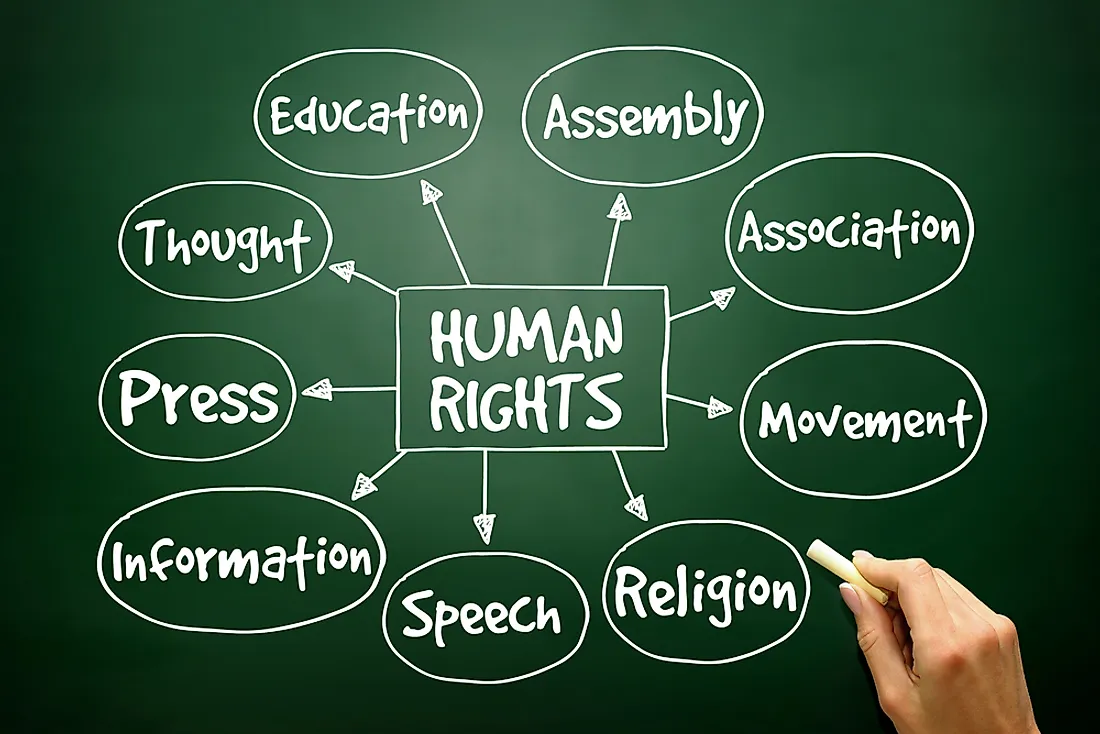
https://www.jrf.org.uk/report/poverty-uk-denial-peoples-human-rights
Q. Is poverty in the UK a denial of people's human rights?
A. YES
Damian Killeen
17th Jan 2008
Related topics
Is poverty in the UK a denial of people's human rights?Is poverty in the UK a denial of people's human rights?
Failure to incorporate the principles of the UN Convention on Economic, Social and Cultural Rights into UK law has compounded social attitudes that denigrate people who experience poverty and undermine popular support for eradicating poverty, argues Damian Killeen.Summary
Summary
Is poverty in the UK a denial of people's human rights?
Being poor in the United Kingdom can mean being subjected to discrimination on the grounds of poverty. Both poverty and discrimination are contrary to the spirit and the terms of the Universal Declaration on Human Rights. Damian Killeen argues that the refusal of successive governments to incorporate the International Covenant of Economic, Social and Cultural Rights into UK law has compounded common social attitudes that denigrate people who experience poverty and that undermine popular support for policies to eradicate poverty.
Key points
Discrimination against people on the grounds of their poverty is a common but relatively unacknowledged feature of life in the UK.
Such discrimination is sometimes based on views that people living in poverty are inferior or of lesser value. Such attitudes can become embedded as 'poverty-ism' – a phenomenon akin to racism or sexism
There are deeply held views among the public about the 'deserving' and the 'undeserving' poor in the UK. This is reflected in governments' resistance to highlighting wealth redistribution as a means of combating poverty.
In terms of legislation:
The Government has consistently resisted UN pressure to incorporate the International Covenant on Economic, Social and Cultural Rights into UK law 1998, contrary to a recommendation from the Joint Committee on Human Rights of the House of Lords and the House of Commons.
In 2007, the Government rejected EU proposals which would have incorporated the European Charter of Fundamental Rights into UK law. This Charter builds on the rights protected by the European Convention on Human Rights to create more comprehensive protection for economic, social and cultural rights.
The new Equality and Human Rights Commission is required to prioritize the rights protected by the UK's Human Rights Act, which generally excludes economic, social and cultural rights, in its human rights work. Moreover UK equality law does not specifically cover poverty, which means the Commission cannot take anti-discrimination cases on poverty, as it can where discrimination is based on sex, race, disability, religion or belief, age or sexual orientation.
UK governments have tended to confuse the adoption of internationally recognized human rights standards with the abdication to international courts of their right to govern. Rather than rejecting these aspects of international and European agreements, this paper recommends that:
Discussion on combating poverty should be based on the human rights values and principles that should underpin the shared lives of people in the UK.
The UK Government should fully incorporate international human rights standards into UK legislation; and that
Discrimination on the grounds of poverty should be outlawed in UK legislation.
The experience of discrimination
Discrimination against people on the grounds of their poverty is a common but relatively unacknowledged feature of life in the UK. This discrimination can range from subtle differences in treatment by service providers and the general public to the failure to provide basic necessities, such as adequate incomes and shelter, that are regarded as fundamental human rights by the world community.
Those who discriminate can be entirely unaware of their behavior, of the attitudes and assumptions that underlie it and of its impact. Those who are discriminated against can feel that they are being judged and found wanting as individuals, that their right to belong in society is under question and that they are destined to be excluded from the benefits of increasing prosperity experienced by the majority.
As part of the research for this paper a group of people living in poverty came together to explore their experiences of discrimination and the effects these had on them. Participants described a range of experiences at the hands of the public and public services, including health, education and the police, where they were convinced that perceptions of their poverty had led to them being treated differently from others. In some cases this had led to them feeling shame and guilt for seeking help. One person described being made to feel 'invisible' as the rules were imposed without any apparent regard to her needs. Asylum-seekers, in particular, said that they felt dehumanized by the treatment and different level of support they received.
People said that their expressions of distress and their desperation at failing to get fair treatment were too easily interpreted as aggression by service staff and could lead to assistance being denied. These people with direct experience of living in poverty were convinced that the treatment they received was different from what people with higher social status would expect.
Much public policy on poverty in the UK assumes a relationship between 'rights' and 'responsibilities'; any entitlements to assistance are conditional on the engulfment of a range of criteria. Some criteria are objective and universally applied, such as age and family composition. However, in some areas professionals have scope for using individual discretion. The experiences of people living in poverty shows the use of discretion can easily become or be perceived as being discrimination.
Parents described the problems faced by their children at school. These included dinner ladies telling children that their parents were lazy and giving them the worst of the food to eat. Being bullied was a common experience, often connected with children not having the 'right' clothes or trainers.
One woman described a catalog of difficulties she had experienced in getting an appropriate response to her child's educational needs. She said that only one social worker had been sympathetic to her efforts; that social worker had said she understood the difficulties because she had been brought up on a similar estate.
Workshop on experiencing discrimination
Discrimination and human rights
Discrimination is the unfair treatment of a person or group on the basis of prejudice. Discrimination is regarded as a major barrier to people achieving their human rights. However, legislation does not deal with all aspects of discrimination that people might experience in daily life. It is primarily concerned with ensuring that people are treated equally in matters that are already governed by law.
The UK Human Rights Act 1998 enshrines in UK law Articles 2-12, 14, and 16-18 of the European Convention on Human Rights, as well as Articles 1-3 of the First Protocol, and Articles 1-2 of the Sixth Protocol to the Convention. These deal primarily with the relationship between the individual and the state and do not reflect wider aspects of human rights, such as freedom of poverty, although the definition of discrimination in Article 14 does recognize discrimination on the basis of social origin or property.
The Human Rights Act does not include Article 13 of the European Convention. This omission restricts the right of appeal to the European courts when people feel that they have not received justice from a UK court and is based on the grounds that UK law and judicial review already provide adequate protection for individuals who believe that their human rights have been infringed by the state.
"Everyone is entitled to all the rights and freedoms set out in this Declaration."
Article 2, Universal Declaration of Human Rights
"All are entitled to equal protection against any discrimination in violation of this Declaration and against any incitement to such discrimination."
Article 7, Universal Declaration of Human Rights
"The enjoyment of the rights and freedoms set forth in this Convention shall be secured without discrimination on any ground such as sex, race, color, language, religion, political or other opinion, national or social origin, association with a national minority, property, birth or other status."
Article 14, European Convention on Human Rights
"Everyone whose rights and freedoms as set forth in this Convention are violated shall have an effective remedy before a national authority notwithstanding that the violation has been committed by persons acting in an official capacity."
Article 13, European Convention on Human Rights
One young woman said that she felt looked down on by other women in a training group because she came from an area with a reputation for poverty. This had led to her abandoning the training and with it her opportunity to progress. Looking back, she said that she should have been able to cope but that she had low self confidence at the time.
Others also said that perceptions of class play an important part in judging how other people feel about them and how they feel about themselves.
Workshop on experiencing discrimination
What is 'poverty-ism'?
Negative attitudes towards people who experience poverty can take many forms, including stigmatization, prejudice and discrimination. Such attitudes are sometimes based on the view that people living in poverty are inferior or of lesser value. Discrimination of this kind can then become embedded as 'poverty-ism' – a phenomenon akin to racism or sexism. 'Postcode discrimination', for example – in which people are refused access to services, such as insurance or credit, or are treated differently on the basis of their postal address – has long been recognized as a form of discrimination.
Poverty-ism can also become institutionalized in the culture of organisations, including those whose remit is to help people cope. One report (Wright, 2003) of an ethnographic study of the operations of a job center demonstrates the ease with which potentially benign policies can be translated into discriminatory services by the intervention of the personal prejudices of staff. In this example, the informal division of clients into 'Good ' and 'Bad' and the Bad into 'wasters', 'unemployable', 'nutters', 'hoity-toity' (unemployed professionals who could be more trouble than they were worth) and those who are 'at it', led to unofficial differentiation's in the quality of service provided and to self-fulfilling prophecies in terms of outcomes. The study also recorded the ways in which clients would sometimes counter the stereotype imposed upon them but would more often conform to their label as a means of both them and the staff maintaining a comfortable form of status quo.
Poverty-ism is embedded in class and other social relations in Britain. Public attitude surveys express some of the ambivalent views on poverty (Castell, 2007). They reveal a widespread resentment of people living in poverty. Better-off people may often disapprove of the fact that many poor people share the same tastes and consumerist aspirations as they do. This can extend to a denial that poverty exists and hostility towards the costs of providing people with opportunities to escape their poverty.
One explanation proposed for such resentment is the precariousness of existence for many: in a very unequal society, people feel highly protective of any advantage they have (Young, 2003). As a result, people who experience poverty may be portrayed, in the media and in general public discussion, as not sharing society's common values and not worthy of equality of respect (Sayer, 2005).
Whilst the Government has introduced a range of measures since 1996 to improve the conditions and opportunities of people living in poverty, popular attitudes reflected and amplified by much of the media have made them reluctant to promote fully re-distributive approaches to combating poverty.
Equality and Human Rights
The Human Rights Act 1998 incorporated into UK law the rights enshrined in the European Convention on Human Rights which are mainly civil and political rights. The UK's equality laws protect the rights of people from a number of 'equality strands': sex, race, disability, religion or belief, age, and sexual orientation. The Equality Act 2006 authorised the establishment of a UK Equality and Human Rights Commission (EHRC). The EHRC came into operation in October 2007.
All international declarations and conventions dealing with human rights, from the Universal Declaration of 1948 through to the European Charter of Fundamental Human Rights, offer protection from discrimination on a wide range of grounds additional to the 'equalities groups', including 'property' and 'social origin'. These grounds, among others, are imported into UK law via the Human Rights Act with its expansive definition of discrimination, but are not otherwise reflected in the UK's equality laws which are limited to the 'strands' described above.
A key function of the Equality and Human Rights Commission is to ensure that "people's ability to achieve their potential is not limited by prejudice or discrimination". Among other things, it has duties to ensure that people in the specific 'equalities groups' are protected against discrimination, and to promote and protect human rights.
The Equalities Review (2007), published in February 2007 before the EHRC began work, investigated the causes of persistent discrimination and inequality in UK society. Following the thinking of Amartya Sen (1999), it proposed a human rights framework based on a range of 'capabilities' including several, such as to "enjoy an adequate and secure standard of living" and "to live with independence, dignity and respect", which are particularly relevant to people living in poverty in the UK. The process of the Equalities Review and the remit of the Commission demonstrate a tension between a partial approach to human rights based on the rights of specific population groups and a more holistic approach to all dimensions of human rights.
Ten domains of central and valuable 'capabilities'
THE CAPABILITY TO BE ALIVE
For example, being able to:
avoid premature mortality through disease, neglect, injury or suicide
THE CAPABILITY TO LIVE IN PHYSICAL SECURITY
For example, being able to:
go out and to use public spaces safely and securely without fear
THE CAPABILITY TO BE HEALTHY
For example, being able to:
maintain a healthy lifestyle, including exercise and nutrition
live in a healthy and safe environment including clean air, clean water
THE CAPABILITY TO BE KNOWLEDGEABLE, TO UNDERSTAND AND REASON, AND TO HAVE THE SKILLS TO PARTICIPATE IN SOCIETY
For example, being able to:
develop the skills for participation in productive and valued activities, including parenting
access education, training and lifelong learning that meets individual needs
THE CAPABILITY TO ENJOY A COMFORTABLE STANDARD OF LIVING, WITH INDEPENDENCE AND SECURITY
For example, being able to:
enjoy an adequate and secure standard of living including nutrition, clothing, housing, warmth, social security, social services and utilities
share in the benefits of scientific progress including information technology
THE CAPABILITY TO ENGAGE IN PRODUCTIVE AND VALUED ACTIVITIES
For example, being able to:
choose a balance between paid work, care and leisure on an equal basis with others
work in just and favourable conditions
THE CAPABILITY TO ENJOY INDIVIDUAL, FAMILY AND SOCIAL LIFE
For example, being able to:
hope for the future
develop and maintain self-respect, self-esteem and self-confidence
THE CAPABILITY TO PARTICIPATE IN DECISION-MAKING, HAVE A VOICE AND INFLUENCE
For example, being able to:
participate in the formulation of government policy, locally and nationally
participate in non-governmental organisations concerned with public and political life
THE CAPABILITY OF BEING AND EXPRESSING YOURSELF, AND HAVING SELF-RESPECT
For example, being able to:
live without fear of humiliation, harassment, or identity-based abuse
be confident that you will be treated with dignity and respect
THE CAPABILITY OF KNOWING YOU WILL BE PROTECTED AND TREATED FAIRLY BY THE LAW
For example, being able to:
know you will be treated with equality and non discrimination before the law
own property and financial products including insurance, social security, and pensions in your own right
This is a shortened version of a core list of capabilities taken from the final report of the Equalities Review (2007). The list is derived from the international human rights framework, supplemented and refined through deliberative consultation.
Poverty and human rights
The concept of human rights is under attack in the UK. It has become associated with controversy over the freeing of potential terrorists or illegal immigrants. Attempts to vilify human rights for short-term political purposes undermine many decades of humanitarian progress in which the world community has come together around some core ideas of what our basic obligations to each other should be – beginning with respect for each others' lives. These ideas have been codified through the agency of the United Nations into a range of Declarations and Conventions which provide the possibility of recourse to justice for people who feel that their human rights have been ignored or taken from them.
The UK Government ratified the International Covenant on Economic, Social and Cultural Rights in 1976, but with several reservations. This Covenant reflects an international agreement that poverty – both absolute and relative, in developed as well as in developing countries – is an offence against human rights. Despite ratifying the Covenant, the Government resists UN pressure to incorporate Covenant rights into UK law, despite a recommendation for incorporation from the Joint Committee on Human Rights of the Houses of Lords and Commons. The Government argues that the Covenant's statements of social and economic rights represents "aspirational policy objectives which do not impose precise legal obligations on states". The Committee noted that this view understates the obligations which the Covenant imposes on the State (Joint Committee, 2004).
The Government also treats the adoption of measures linked to supra-national structures such as the European Union or the UN as a loss of the UK's right to govern. This has to be balanced against the benefits of ensuring that the UK is bound to the same set of principles as other countries and of providing UK citizens with access to final arbitration by a grouping of peers where individuals believe that their human rights have been breached by the state.
The UN Committee on Economic, Social and Cultural Rights produces five-yearly reports on the implementation of the Covenant by member states. The Committee has criticised the UK Government on poverty-related issues, including:
the failure to ensure that Income Support levels are 'adequate';
the level of the National Minimum Wage and the discriminatory lower minimum wage for 18- to 22- year-olds;
the increasing gap between the richest and poorest people; and
concerns about fuel poverty, homelessness and student tuition fees.
Whilst welcoming the introduction of the Human Rights Act, the Committee has also criticised the UK Government for failing to fully incorporate human rights standards into UK law.
Young mothers involved in crises in their relationships with parents or partners described being separated from their children as a consequence of being allocated 'unhealthy' housing or being denied adequate welfare benefits. One mother of five was offered £36 per week to meet her family's needs after leaving her job to protect her children from an abusive father. She said she thought she was being punished by the system when she believed she was putting the interest of her children first. She kept her family together by selling the children's toys in order to buy food.
Workshop on experiencing discrimination
What needs to happen?
In recent years, discussion of the ethical basis for combating poverty has become submerged in debate about the Government's efficiency and effectiveness in achieving its poverty eradication targets. This trend needs to be reversed, with discussion returning to the values and principles that should underpin the shared lives of people in the UK. The value of the human rights framework should be reasserted by government as an inclusive basis for conducting this debate. Leadership in taking this debate to the public should be exercised by the Equality and Human Rights Commission and human rights and poverty bodies working together to ensure that the perspectives of those who experience poverty in the UK are at the center of the discussion about what values constitute 'Britishness'.
In 2004, the Joint Committee on Human Rights of the House of Lords and the House of Commons reviewed the Government's implementation of the International Covenant on Economic, Social and Cultural Rights. The Committee argued that the Government should accept the Covenant rights and said: "In our view a rights-based approach can assist government in addressing poverty and Parliament and civil society in scrutinizing its success in doing so". This proposal was rejected by the Government.
If the new UK Equality and Human Rights Commission is to establish itself as an independent and objective defender of rights, it could begin by revisiting this debate and by conducting a comprehensive review of the relevance of poverty and poverty-related policies to the full achievement of a UK society based on the principles of equality and the upholding of all peoples' human rights. Indicators of real change in approach from government would be the amendment of the Human Rights Act 1998 to incorporate the terms of the International Covenant on Economic, Social and Cultural Rights and the outlawing of discrimination based on poverty.
Economic, social and cultural rights
The Universal Declaration of Human Rights was adopted by the General Assembly of the United Nations in 1948. Article 22 of the Declaration states the right to "social security and … the economic, social and cultural rights indispensable for [an individual's] dignity and the free development of his personality". Further Articles specify these rights.
The International Covenant on Economic, Social and Cultural Rights (1966), which the UK Government has ratified, with reservations, developed these rights further.
In 2001, the UN Committee on Economic, Social and Cultural Rights, which oversees the Covenant, asserted the relevance of poverty to the Universal Declaration and its subsidiary instruments, citing it as:
"a global phenomenon experienced in varying degrees by all States … While the common theme underlying poor peoples' experiences is one of powerlessness, human rights can empower individuals and communities. The challenge is to connect the powerless with the empowering potential of human rights. Although human rights are not a panacea, they can help to equalize the distribution and exercise of power within and between societies."
In 2004 the Joint Committee on Human Rights of the House of Lords and the House of Commons observed that, whilst the Foreign and Commonwealth Office commonly declares the importance of economic and social protection rights as essential features of development elsewhere in the world, "this contrasts with an apparent reluctance to use the language of these rights when addressing relevant issues in domestic law and policy". The Joint Committee emphasized the importance of a rights-based approach in addressing poverty and recommended the incorporation of Economic, Social and Cultural rights into UK law. The Government dismissed this recommendation, arguing that many aspects of these rights are already incorporated into other legislation, such as that on social security, and that there is no need to make UK law on these matters subject to any external authority.
About this paper
This discussion paper is part of the JRF's program on Public Interest in Poverty Issues (PIPI). This aims to further understanding on how to build support for poverty eradication in the UK; to deepen understanding of attitudes to poverty and explore their implications for effective communication and change.
The paper was written by Damian Killeen. Damian Killeen is an independent consultant on social justice and sustainable development; he is a past Director of The Poverty Alliance in Scotland 1990-2003, was awarded the OBE in 2004 for his contribution to social inclusion and is a member of the advisory group to JRF's PIPI Program. This paper is an outcome of research undertaken for the advisory group on the experience of discrimination related to poverty in the UK.
Useful reading
Fairness and Freedom, final report of the Equalities Review, HMSO, 2007
Get Heard, UK Coalition Against Poverty, 2006
Poverty, Ruth Lister, Polity Press 2007
Unequal Britain: human rights as a route to social justice, Stuart Weir (Ed), Politico's Publishing Ltd 2006
References
Castell, Sarah and Julian Thompson (2007), Understanding Attitudes to Poverty in the UK, Joseph Rowntree Foundation
Equalities Review (2007), 'Fairness and Freedom: the final report of the Equalities Review', HMSO
Joint Committee (2004), 'The Implementation of the International Convention on Economic, Social and Cultural Rights', Report of the Joint Committee on Human Rights of the House of Lords and the House of Commons
Sayer, Andrew (2005), 'Class, moral worth and recognition' in Sociology, Vol. 39, Sage Publications
Sen, Amartya (1999), Development As Freedom, Oxford University Press, New Delhi
Wright, Sharon (2003), 'The street level implementation of unemployment policy' in Understanding Social Security, Jane Millar ed., The Policy Press
Young, Jock (2003), 'Merton with energy, Katz with structure; the sociology of vindictiveness….' in Theoretical criminology, Vol. 7. (3) Sage Publications




